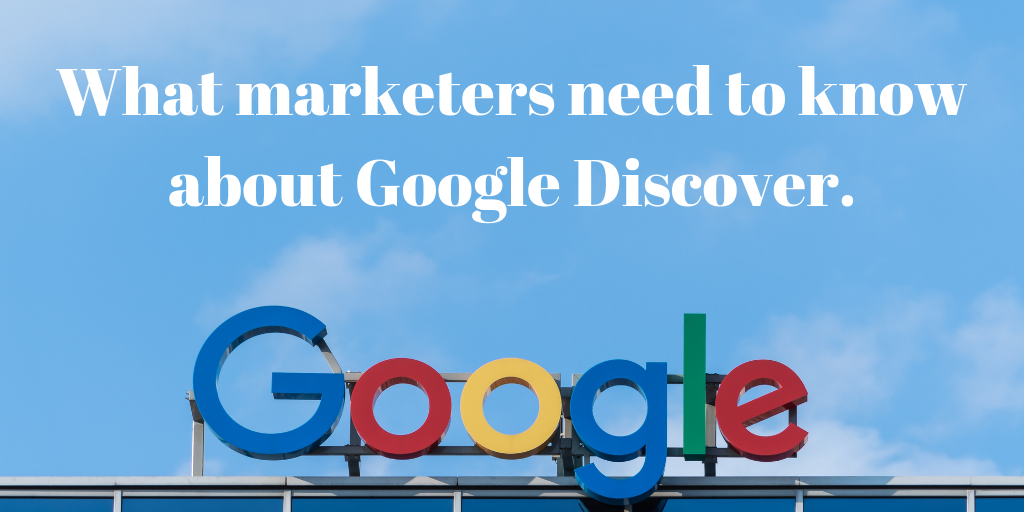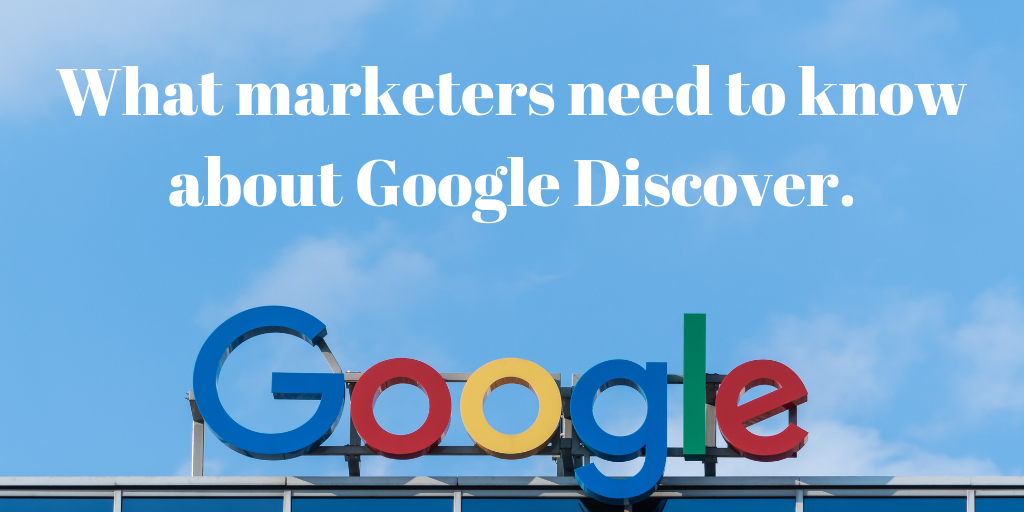Have you heard of Google Discover? It used to be called the Google Feed, but Google decided to update the name to better reflect what the point of the feed is – to help you discover content about things that matter to you. So, what do you need to know about it? And can you use it for your marketing?
What is Google Discover?
It’s a method of content delivery that showcases fresh and interesting content, based on what it recognises you’re interested in. You don’t have to actively search for anything, you just get the content delivered to you in a feed.
It also shares evergreen content that’s relevant to you – if you’re planning a trip, for example, an article about your destination might be newly topical for you specifically, so Discover will surface that.
The idea is that you get a range of sources and perspectives, so that we’re not living in an online echo chamber that never presents us with anything new or challenging.
If you’ve never heard of it, you might wonder what’s the point. But roughly 800,000,000 people are using it according to Google, so perhaps it’s worth a little consideration for your marketing strategy.
How does Google Discover work?
The new version of Google Feed is based on your personal search history, combined with Google AI, to find the things that you’re interested in. So if you’re constantly searching tech news, the algorithm will know that’s what you engage with, and bring you more.
The people behind it even say that it can recognise how much of an expert you are in a topic or a hobby and provide relevant content to help you develop and grow your knowledge. If you’ve just started knitting or rock climbing, your feed will pop up with beginner information, while a pro-athlete will get expert-level content aimed at them.
Users can tell the system that they’d like more or less of a particular topic, or click through to discover similar content. The more you interact with it, the closer Google Discover comes to understanding exactly what you like, delivering ever more interesting content to you.

How do you get it?
Google Discover is the default front page of the Google app on mobile phones. The company say it is also available on Google.com when browsing on your mobile, but we’ve found that to be rather hit and miss.
Essentially, you don’t have to do anything to get it – Google will automatically populate the feed with content it thinks you’ll like.
How can marketers optimise for Google Discover?
Because users aren’t specifically searching for anything, you might think it’s not possible to optimise your content for this platform. However, knowing how Google looks at web content, we can make some pretty close judgements on what to be looking out for. You can’t control what Google chooses, so any content you create should be aligned to your strategy, just with a few tweaks to help it potentially get chosen.
First, make sure your context is indexed. Then make sure it meets Google’s news content policies. You don’t have to create special tags or structured data, you just have to make great content. Other sources have also said that you need to be in the Knowledge Graph/Google My Business ecosystem to be visible, though this hasn’t been confirmed.
High quality content is king. That’s what Google wants for SEO in general, and it stands to reason if they’re actively sharing an article or video, they’re going to want it to be as high quality as possible. This shouldn’t be far from your usual strategy – have the best content on the topic, content that’s more relevant, interesting, or trustworthy than anyone else’s.
The trustworthiness of your content is going to be significant here. Anything Google actively shares with its users, rather than returning in search results, will need to be something they (or their AI) believe is credible, expert, and authoritative.
The other element that’s likely to matter – and it ties into trustworthiness – is how much engagement you’re getting on your content. If it’s widely shared and engaged with, it will be a signal to Google that it’s relevant and interesting, which is what they’re looking for in content that they share on Discover.
You know when you share something from your website on your social feeds? The information that shows up – the titles and meta descriptions will be what are pulled in on Google Discover, too.
Oh, and make sure everything is mobile-friendly. That should be a given nowadays anyway, but as Google Discover is a mobile feature, you categorically have to be optimised for mobile if you want to appear.
What types on content should I produce for Discover?
While the previous Google Feed focused primarily on written content, Google have said that they’re putting extra emphasis on visual content for Discover. Which means that you need to have a visually appealing link – so a great image is a must. In fact, Google recommend using a high-res image that’s at least 1,200 pixels wide.
Video content should also be part of your strategy – not just to attract Google Discover, but because it’s an increasingly important part of digital marketing.
Cisco predict that 80% of internet traffic will be video based by as soon as 2020, so video should absolutely be part of your overall strategy.
Plus, it gives you opportunities on YouTube, often described as the second largest search engine (sorry Bing). Take one of your well-performing posts and create a video version of it. Optimise and promote it.
In terms of the topics you should cover, look at what has been primarily shared on Google Feed and Discover so far. It’s been a lot of trending news, topical sports stories, timely industry updates, and so on. So, up-to-date content is more likely to be picked up. While Google will be sharing evergreen content, a mixture of both will give you more of a chance to feature.
Are keywords important?
For SEO, yes, keywords are super important. But are they for Google Discover? Well, not really.
The content isn’t discovered through a search, it’s shared by Google. So, keywords aren’t the primary driver of getting your content on the feed. That said, your keyword research is usually a good way of finding out what people are interested in, so it’s not completely useless either.
The main thing to consider is your titles and descriptions. If you’re optimising for SEO, you’ll be using your keywords in them. But if you’re optimising for social media, you should be looking at headlines that encourage people to click your link, therefore not necessarily using the keywords.
Think of Google Discover as much more like a social feed than search results. You may find that items that are shown on Discover are different to those ranking in search, so it’s not pages that are optimised for keywords that are necessarily being surfaced by Google through Discover.
Based on Google’s focus on quality content, we’d advise steering clear of clickbait headlines.
Will there be ads on Google Discover?
In May 2019, Google confirmed they were introducing more ad platforms, which will be rolling out globally later this year. In the announcement, they specifically talked about Showcase Shopping ads – rich lifestyle imagery in a more visual ad format – as being added to Google Discover and Google Images.
It’s likely that more types of advertising will appear on the feed over time, but it’s also likely that the visual appearance of the ads will be more heavily scrutinised before acceptance, given Google’s prioritisation of high quality imagery in the articles they choose to share.
Good quality visuals should always be part of your strategy – humans are visual creatures, after all – so this should simply tie in with what you were doing anyway.
Can I measure Google Discover?
If you’re interested in being found online, you’re probably already paying close attention to your stats and analytics. You know that measuring something is the only way to improve, optimise, and succeed with it.
So, you’ll be pleased to know that you can find data in your Google Search Console. Data is only available as far back as March 2019, but you can start looking at what content appears, how often, and how well it does. And once you have data, you can start looking at improvements.
Need help with your SEO marketing? Check out our post on how to improve your keyword rankings, or give us a shout for some impartial advice.



